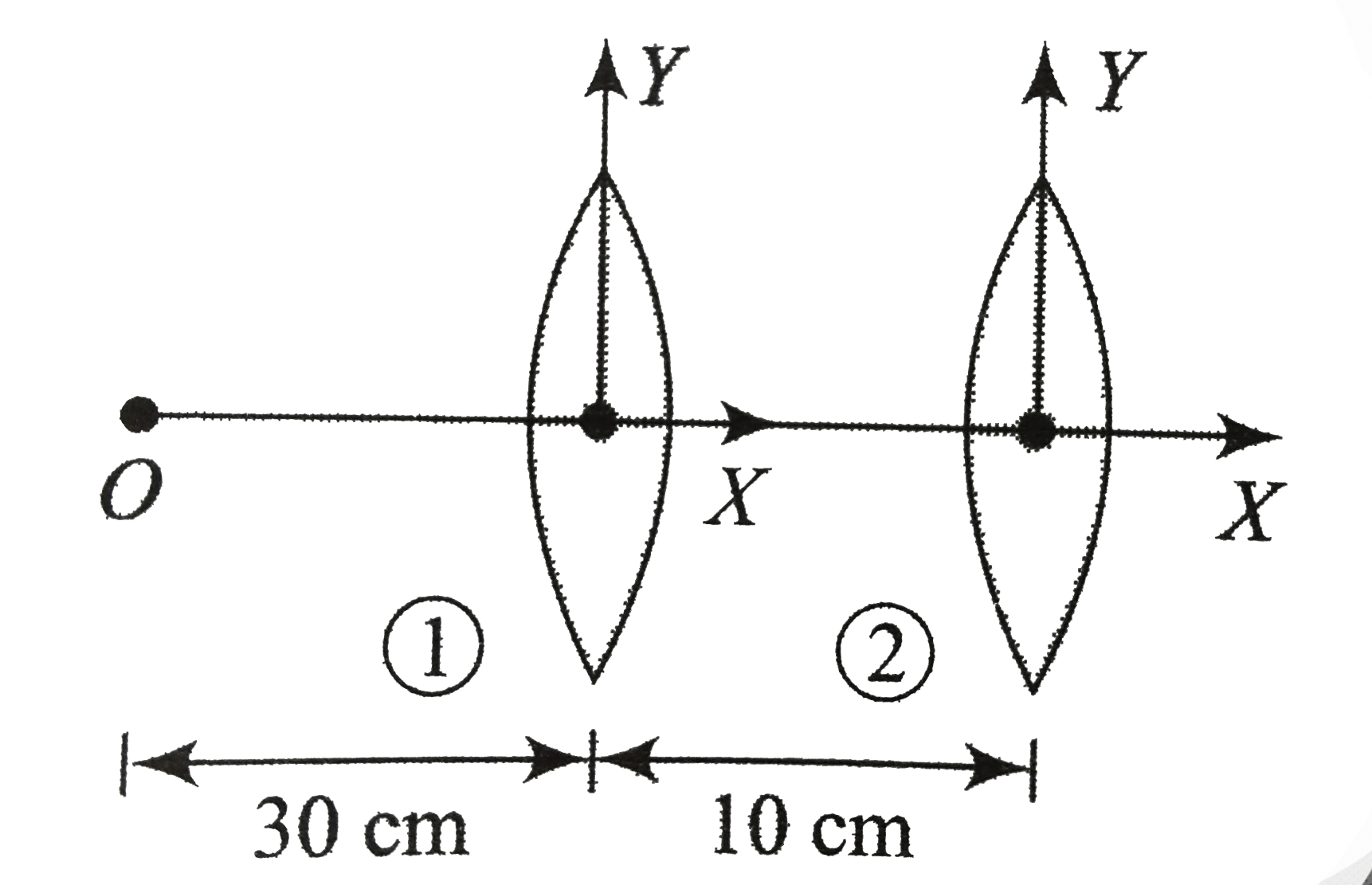(a) (i) Draw a labelled ray diagram to show the formation of image in an astronomical telescope for a distant object.
(ii) Write three distinct advantages of a reflecting type telescope over a refracting type telescope.
(b) A convex lens of focal length 10 cm is placed coaxially 5 cm away from a concave lens of focal length 10 cm. If an object is placed 30 cm in front of the convex lens, find the position of the image formed by the combined system.
(a) 
(ii) First, there is no chromatic aberration in a mirror. Second, if a parabolic reflecting suface is chosen, spherical aberration in also removed. Mechanical support is much less of a problem since a mirror weighs much less than a lens of equivalent optical quality, and can be supported over its entire back surface, not just over its rim.
(b) f1=10cm,d=5cm,f2=−10cm
u=−30cm,v=?
Combined focal length f is
1f=I1f1+1f2−df1f2,1f=110+1−10−5(10)(−10)
1f=110−110+5100⇒f=1005=20cm
1f=1v−1u,120=1v−1−30⇒120=1v+130
120−130=1v⇒3−260=1v
∴v=60cm
∴ Image will be formed at a distance of 30cm from the combination of lenses.
Topper's Solved these Questions
- BOOK - RESONANCECHAPTER - GEOMATRICAL OPTICS EXERCISE - Advance level Problems35videos
GEOMATRICAL OPTICS
- BOOK - RESONANCECHAPTER - GEOMATRICAL OPTICS EXERCISE - Exercise-263videos
GEOMATRICAL OPTICS
- BOOK - RESONANCECHAPTER - EXPERIMENTAL PHYSICSEXERCISE - PART -II10videos
EXPERIMENTAL PHYSICS
- BOOK - RESONANCECHAPTER - GRAVITATIONEXERCISE - HIGH LEVEL PROBLEMS16videos
GRAVITATION
Similar Questions
A convex lens of focal length 10 cm is placed coaxially 5 cm away from a concave lens of focal length 10 cm. If an object is placed 30 cm in front of the convex lens, find the position of the final image formed by the combined system.
View SolutionA convex lens of focal length 10 cm is placed coaxially 5 cm away from a concave lens of focal length 10 cm. If an object is placed 30 cm in front of the convex lens, find the position of the final image formed by the combined system.
View Solution
Knowledge Check
- Question 1 - Select One
An object placed 10 cm in front of a convex lens of focal
length 15 cm. The image produced will beAa Real and magnifiedBb Virtual and magnifiedCc Virtual and reduced in sizeDd Real and reduced in size - Question 2 - Select One
An object is kept at a distance of 15 cm from a convex lens of focal length 10 cm. Calculate the image distance and state the characteristics of the image formed.
Aupright and magnifiedBinverted and magnifiedCinverted and diminishedDupright and diminished - Question 3 - Select One
An object is placed 12 cm from a convex lens whose focal length is 10cm. The image must be:
Avirtual and enlargedBvirtual and reduced in sizeCreal and reduced in sizeDreal and enlarged
A convex lens of focal length 10cm is placed co-axially 5cm away from a concave lens of focal length 10cm. If an object is placed 30cm in front of the convex lens, find the position of final image formed by the combined system.
View SolutionA convex lens of focal length 30cm and a concave lens of focal length 60cm are placed in combination. If an object is placed 40cm away from the combination, find the position of the image.
View SolutionA convex lens of focal length 20cm is placed 10cm away from a second convex lens of focal length 25 cm. What wil be the location of the image of an object at 30 cm in front of the first lens?
 View Solution
View SolutionAn object 10 cm tall is placed on the principal axis of a concave lens of focal length 10 cm at a distance of 15 cm from it. Find the position and nature of the image formed by the lens and draw the ray diagram.
View SolutionAn object is placed at a distance of 30 cm from a convex lens of focal length 20 cm.Is the image erect or inverted ?
View Solution
